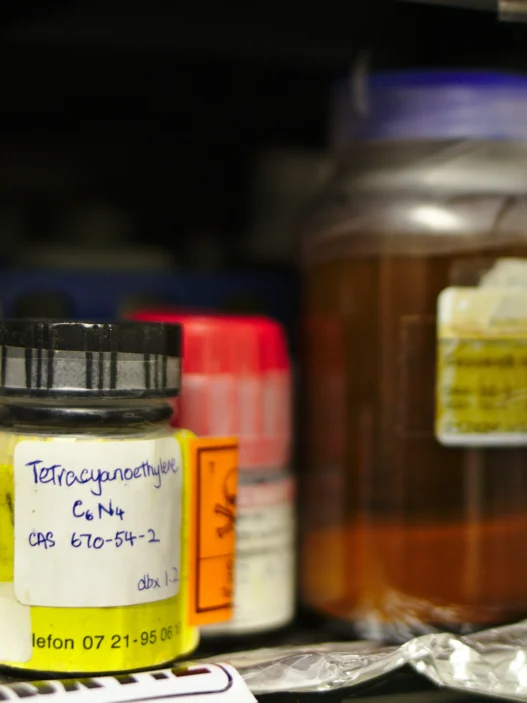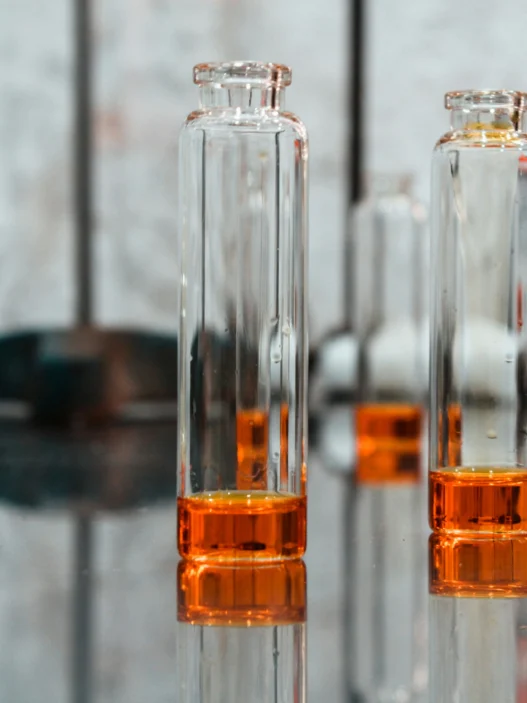Benzyl alcohol, a widely used compound in various industries, holds relevance in everyday life due to its versatility and numerous applications. Commonly utilized as a solvent, preservative, and fragrance ingredient in various personal care products, pharmaceuticals, and food items, benzyl alcohol plays a crucial role in ensuring product stability, efficacy, and safety. Furthermore, its antimicrobial properties make it a key ingredient in healthcare products such as disinfectants and antiseptics. Overall, benzyl alcohol remains a ubiquitous compound that significantly impacts everyday life through its diverse range of applications.
Table of Contents:
- 💡 Commercial Applications
- ⚗️ Chemical & Physical Properties
- 🏭 Production & Procurement
- ⚠️ Safety Considerations
- 🔬 Potential Research Directions
- 🧪 Related Compounds
💡 Commercial Applications
Benzyl alcohol, a colorless liquid with a mild pleasant aroma, finds numerous commercial and industrial applications. It serves as a solvent in the formulation of inks, paints, and coatings. Additionally, it is utilized as a precursor in the synthesis of various chemicals, such as benzyl acetate and benzyl benzoate.
In the realm of drug and medication applications, benzyl alcohol is commonly employed as a bacteriostatic preservative in injectable medications and intravenous infusions. Its antimicrobial properties help prevent the growth of bacteria and fungi in pharmaceutical products. Furthermore, benzyl alcohol is utilized in topical medications, such as lotions and ointments, for its antipruritic (anti-itch) and analgesic (pain-relief) properties.
⚗️ Chemical & Physical Properties
Benzyl alcohol is a colorless liquid with a mild, pleasant aroma. It is commonly described as having a sweet, floral scent.
With a molar mass of 108.14 g/mol and a density of 1.045 g/cm³, benzyl alcohol is similar in weight to common household items such as vinegar and slightly denser than water.
Benzyl alcohol has a melting point of -15 °C and a boiling point of 205 °C. Compared to common household items, it has a lower melting point than table salt and a higher boiling point than rubbing alcohol.
Benzyl alcohol is moderately soluble in water and has a moderate viscosity. It is less soluble than sugar and slightly more viscous than rubbing alcohol.
🏭 Production & Procurement
Benzyl Alcohol is primarily produced through the catalytic hydrogenation of Benzaldehyde in the presence of a metal catalyst such as copper or nickel. This process involves the addition of hydrogen gas to the Benzaldehyde molecule, resulting in the formation of Benzyl Alcohol.
Benzyl Alcohol can be procured commercially from various chemical manufacturers and suppliers. It is commonly available in liquid form and is typically transported in drums or containers. The chemical is considered stable under normal storage conditions and can be shipped and handled by trained personnel in accordance with safety guidelines and regulations.
The transport of Benzyl Alcohol is typically done using standard chemical transportation methods, such as tank trucks or railcars. It is important to ensure that proper precautions are taken during transportation to prevent any spills or leaks that could pose a risk to human health or the environment. Additionally, proper labeling and documentation must be in place to comply with regulations regarding the handling and transport of hazardous chemicals.
⚠️ Safety Considerations
Safety considerations for Benzyl Alcohol include its flammable nature, potential irritant properties, and toxicity if ingested or inhaled in large quantities. As a flammable liquid, Benzyl Alcohol should be stored away from sources of ignition and handled with proper care to prevent accidents. Contact with skin or eyes can cause irritation, so protective equipment such as gloves and goggles should be worn when working with this substance. Ingestion or inhalation of Benzyl Alcohol in high concentrations can lead to symptoms such as headache, dizziness, nausea, and respiratory distress, so it is important to avoid direct exposure and ensure adequate ventilation when using it.
In terms of pharmacology, Benzyl Alcohol is commonly used as a solvent and preservative in various pharmaceutical preparations. It is known for its antimicrobial properties, which help to prevent the growth of bacteria and fungi in products such as injectable medications, topical creams, and oral solutions. Additionally, Benzyl Alcohol can act as a local anesthetic, providing relief from pain or itching when applied to the skin or mucous membranes. Its ability to dissolve a wide range of substances makes it a versatile ingredient in drug formulations, enhancing the stability and effectiveness of many pharmaceutical products.
Hazard statements for Benzyl Alcohol include its flammable properties, potential for skin and eye irritation, and harmful effects if ingested or inhaled. The substance is classified as a Category 2 flammable liquid, meaning it can ignite easily and pose a fire hazard in certain conditions. Skin contact may result in redness, itching, or rash, while eye exposure can cause irritation and possible damage to the cornea. Ingestion or inhalation of Benzyl Alcohol can lead to headache, dizziness, nausea, vomiting, and respiratory problems, with higher doses posing a greater risk of toxicity and systemic effects. It is important to follow proper handling procedures and safety precautions to minimize the potential hazards associated with this chemical.
Precautionary statements for Benzyl Alcohol include recommendations for safe handling, storage, and disposal to prevent accidents and minimize exposure risks. It is advised to keep the substance away from heat, sparks, and open flames, and store it in a cool, well-ventilated area away from incompatible materials. Proper personal protective equipment should be worn when working with Benzyl Alcohol, including gloves, goggles, and lab coats to protect the skin, eyes, and clothing from contact and splashes. In case of spills or leaks, contain the area and clean up promptly using appropriate absorbent materials and disposal methods. It is also important to follow local regulations and guidelines for the safe handling and transportation of Benzyl Alcohol to ensure the well-being of individuals and the environment.
🔬 Potential Research Directions
One potential research direction for Benzyl Alcohol is its application in pharmaceutical formulations, especially as a preservative due to its antimicrobial properties and low toxicity profile. Further investigation into its efficacy and potential interactions with other ingredients could provide valuable insights for the development of safe and effective medications.
Another area of research could focus on the use of Benzyl Alcohol as a solvent in various industries, such as cosmetics, paints, and coatings. Studying its solubilizing capabilities and its impact on product stability and performance could help optimize formulations and improve product quality.
Research into the potential environmental impact of Benzyl Alcohol, particularly its biodegradability and fate in different ecosystems, could provide valuable information for assessing its ecological safety and implementing proper disposal practices. Understanding how Benzyl Alcohol behaves in the environment could help mitigate any negative consequences of its use.
🧪 Related Compounds
One similar compound to Benzyl Alcohol is Phenol, which has a similar molecular structure but contains a hydroxyl group attached directly to an aromatic benzene ring. Phenol is commonly used in antiseptics, disinfectants, and chemical intermediates due to its antibacterial properties. It is also an important precursor in the synthesis of various plastics, pharmaceuticals, and other organic compounds.
Another similar compound is Benzaldehyde, which has a benzene ring with an aldehyde functional group attached to it. Benzaldehyde is commonly used as a flavoring agent in foods and fragrances due to its pleasant almond-like odor. It is also used in the production of dyes, perfumes, and pharmaceuticals. Like Benzyl Alcohol, Benzaldehyde is considered a hazardous chemical and should be handled with care.
A third similar compound is Benzyl Chloride, which contains a chlorine atom attached to the benzene ring. Benzyl Chloride is commonly used as a chemical intermediate in the synthesis of various organic compounds, such as dyes, pharmaceuticals, and insecticides. It is also used in the production of polymers and resins. Like Benzyl Alcohol, Benzyl Chloride is classified as a hazardous chemical and should be handled with caution.





